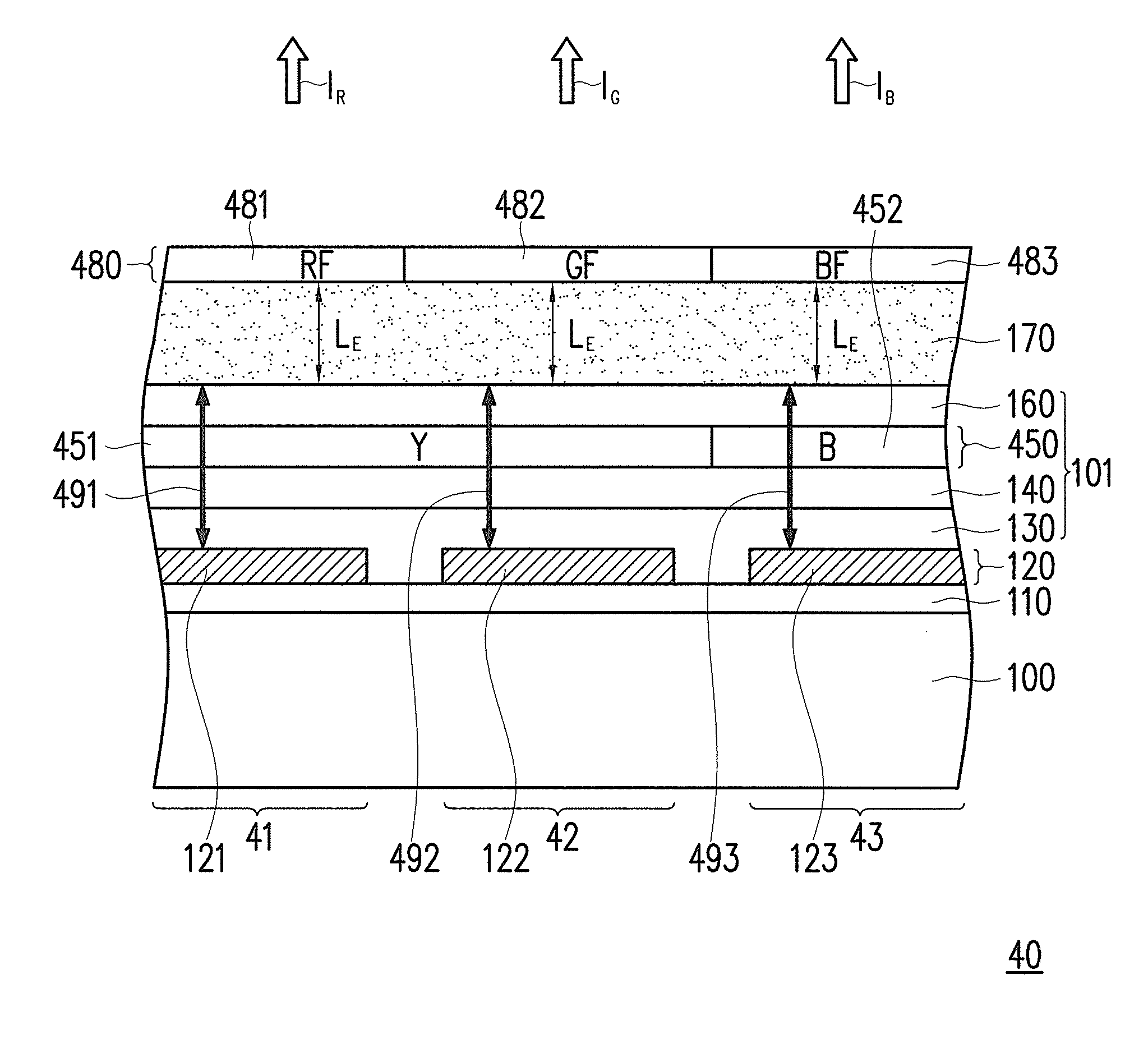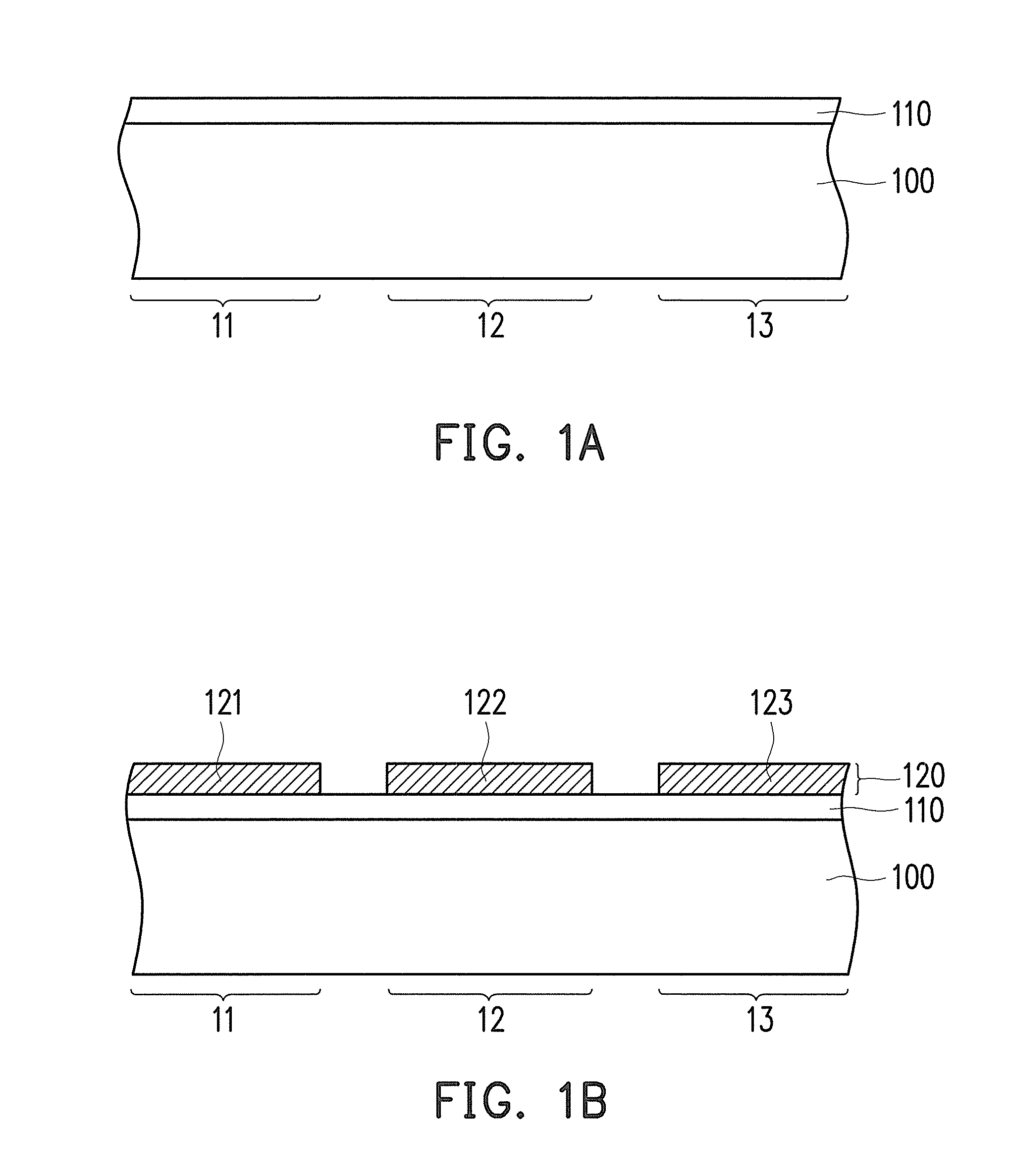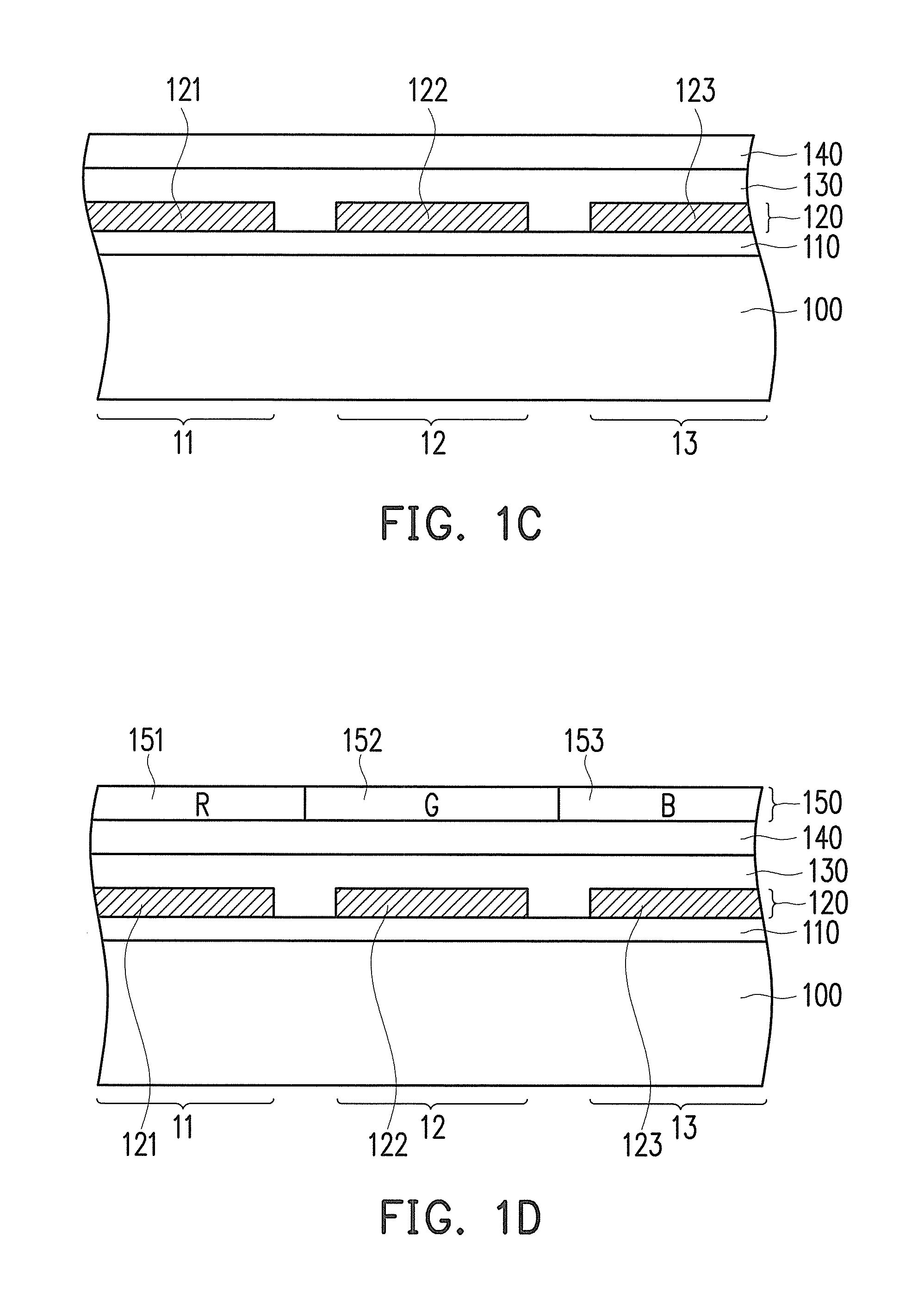Organic electroluminescence display panel
- Summary
- Abstract
- Description
- Claims
- Application Information
AI Technical Summary
Benefits of technology
Problems solved by technology
Method used
Image
Examples
first embodiment
[0017]FIG. 1A to FIG. 1F are schematic cross-sectional flow charts illustrating a manufacturing process of an organic electroluminescence display panel according to the invention. FIG. 2 is a schematic top view illustrating the device layer depicted in FIG. 1A. With reference to FIG. 1A, a device layer 110 is formed on a substrate 100. Here, the substrate 100 is a rigid substrate (e.g., a glass substrate) or a flexible substrate (e.g., a plastic substrate). The substrate 100 may be made of a transparent material or a non-transparent material. Besides, the substrate 100 mainly serves to carry light emitting devices of the organic electroluminescence display panel. Note that the substrate 100 includes a plurality of first pixel areas 11, a plurality of second pixel areas 12, and a plurality of third pixel areas 13, and these pixel areas 11, 12, and 13 respectively display different primary colors of light. To clearly illustrate the invention, FIG. 1A shows one first pixel area 11, one...
second embodiment
[0033]FIG. 3 is a schematic cross-sectional view illustrating an organic electroluminescence display panel according to the invention. The organic electroluminescence display panel 20 depicted in FIG. 3 is similar to the organic electroluminescence display panel 10 depicted in FIG. 1F, while the difference therebetween lies in that the light emitting layer 250 is directly formed on the first electrode layer 120, and the second electrode layer 170 is directly formed on the light emitting layer 250 according to the present embodiment. The organic layer 101 is formed of the light emitting layer 250. Similarly, the light emitting layers 251, 252, and 253 are respectively located in the first, second, and third pixel areas 21, 22, and 23. For instance, the light emitting layers 251, 252, and 253 may be respectively formed by performing an evaporation process with use of first, second, and third FMMs, which should however not be construed as a limitation to the invention. The light emitti...
third embodiment
[0038]FIG. 4 is a schematic cross-sectional view illustrating an organic electroluminescence display panel according to the invention. The organic electroluminescence display panel 30 depicted in FIG. 4 is similar to the organic electroluminescence display panel 10 depicted in FIG. 1F, while the difference therebetween lies in that the organic layer 101 includes the light emitting layer 350, and the distribution of the color light emitting materials in the light emitting layer 350 is different. With reference to FIG. 4, the light emitting layer 350 includes light emitting layers 351, 352, and 353 respectively located in the first, second, and third pixel areas 31, 32, and 33, and the light emitting layer 353 covers the light emitting layers 351 and 352. According to the present embodiment, the first color light emitting material is a red light emitting material R, the second color light emitting material is a green light emitting material G, and the third color light emitting materi...
PUM
 Login to View More
Login to View More Abstract
Description
Claims
Application Information
 Login to View More
Login to View More - R&D
- Intellectual Property
- Life Sciences
- Materials
- Tech Scout
- Unparalleled Data Quality
- Higher Quality Content
- 60% Fewer Hallucinations
Browse by: Latest US Patents, China's latest patents, Technical Efficacy Thesaurus, Application Domain, Technology Topic, Popular Technical Reports.
© 2025 PatSnap. All rights reserved.Legal|Privacy policy|Modern Slavery Act Transparency Statement|Sitemap|About US| Contact US: help@patsnap.com



